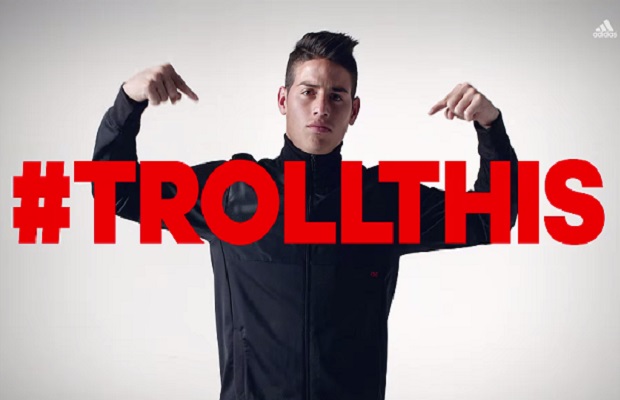Adidas is reportedly moving more of its ad budget away from TV and into digital channels, and is looking to quadruple its online sales by 2020, according to the company’s chief executive Kasper Rorsted.
In an interview, Rorsted explained the sportswear company is looking to boost its ecommerce revenues from €1bn ($1.06bn) in 2016 to €4bn ($4.25bn) by 2020.
Adidas wants to use digital channels to reach this target, with a particular focus on mobile.
Speaking to CNBC on last Wednesday, the Adidas CEO said: “It’s clear that the younger consumer engages with us predominately over the mobile device, digital engagement is key for us; you don’t see any TV advertising anymore.”
He said that “all” the company’s engagement is through digital media and underlined the importance of ecommerce in the next few years.
“We believe in the next three years we can take our online business from approximately €1bn to €4bn to create a much more direct engagement with consumers.”
View an example of Adidas’ online strategy here:
Speaking about the company’s long-term “2020 strategy”Adidas is pushing its female influencer recruitment in a bid to grab a majority share of the female sports market.
However, TV is still pulling in strong figures and data from iSpotTV shows that Adidas has aired a number of TV ads in 2017, including a spot featuring Snoop Dogg, entitled “Original is Never Finished.”
TV still part of the mix
However, its TV outlay in the US is relatively small compared to other advertisers, with Adidas ranked 511th in terms of TV ad spend in the last 30 days, according to the research.
According to its annual report, Adidas increased its overall marketing investments from €1.886 billion in 2015 to €1.981 billion in 2016.
As a percentage of sales, the company’s expenditure for its point-of-sale and marketing investments declined 0.8 percentage points to 13.1% in 2016, from 13.9% in 2015.
It’s all about digital capabilities
Many consumer brands continue to treat digital marketing and digital capabilities as small add-ons to their existing approach: simple social media content feeds, online video advertising, and a website for product information. Adidas has watched its key competitor Nike re-orientate their business around a rich digital marketing ecosystem, and they are applying similar approaches.
Adidas said in its annual report it wants to decrease the ratio of marketing expenses of partnerships to less than 45% by 2020.
In a letter to shareholders in Adidas’ annual report, Rorsted said:
“A strategic topic that will transform our company over the next years is digital. Digital touches our company at every point along the value stream — how we design, develop, manufacture, and sell our products. Already today, Adidas.com and Reebok.com are our largest and fastest-growing shops and we will further accelerate our investments in this area to create competitive advantages through digital. Growing our digital capabilities will ultimately also help us do a better job on margin enhancement.”
The challenge for CMOs
CMOs across the consumer marketing industry have been wrestling with the role of digital channels and their impact on traditional media buying. Until the late 1990s, TV was considered unassailable as the champion media for building a brand, but as content marketing gained traction, and as digital channels multiplied, the number of choices media strategists had, multiplied. This is more than simply a switch of media channels, and unlike when commercial radio first gained traction in many markets. What Adidas, Nike, Air BnB, Unilever, and other leading edge digital brands have realized is that content and experiences can build brands as effectively as traditional advertising had in the past.
Adidas had enjoyed success as an early pioneer in digital marketing, with strong websites in the early 2000s. They’d started mobile-first thinking – long before the launch of iPhone – through ringtones, offers, and music partnerships with artists like Macy Gray. The latest development is simply the continued iterations of an evolving marketing model.
